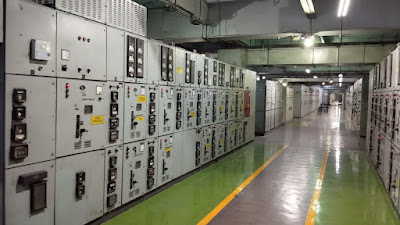Why is KVA Rating Always in Multiples of 11?
Introduction:
KVA rating is a crucial term in the world of electrical engineering, often used to measure the apparent power of transformers and electrical equipment. Curiously, KVA ratings are always expressed in multiples of 11. In this article, we'll explore the reasons behind this intriguing phenomenon,
• Basis of KVA Rating:
KVA stands for "Kilovolt-Ampere" and represents the apparent power of an electrical device. It considers both the electrical load's active power (measured in kilowatts) and reactive power (measured in kilovars). The KVA rating helps determine the capacity of transformers and equipment to handle power demands effectively.
• Relationship Between Voltage and Current:
The key to understanding why KVA ratings are multiples of 11 lies in the relationship between voltage and current.
In an electrical system, voltage (measured in volts) drives the flow of current (measured in amperes). The product of voltage and current results in apparent power, measured in KVA.
• Root Mean Square (RMS) Voltage:
In most electrical systems, the RMS voltage is a sine wave, oscillating between positive and negative values. A full cycle of the sine wave is completed in 360 degrees, representing one complete wave. However, to calculate apparent power accurately, we consider only the positive half-cycle of the sine wave, which covers 180 degrees.
• Phasor Diagrams and Power Triangle:
To visualize the relationship between voltage, current, and apparent power, engineers use phasor diagrams and power triangles. In a power triangle, the hypotenuse represents the apparent power (KVA), the adjacent side represents active power (KW), and the opposite side represents reactive power (KVAR).
• Power Factor Angle:
The angle between the hypotenuse and the adjacent side in the power triangle is the power factor angle (θ).
A power factor of 1 (cosθ = 1) indicates perfect unity between active and apparent power, while a power factor less than 1 (cosθ < 1) indicates reactive power in the system.
• Cosine of 30 Degrees:
To simplify calculations, engineers assume a power factor angle of 30 degrees (cos30° = √3/2 ≈ 0.866). This value is commonly used in electrical systems where the power factor is not known precisely. The cosine of 30 degrees is essential in the RMS calculation and results in the multiplication factor of √3 (approximately 1.732).
•KVA Rating Multiples of 11:
With a power factor angle of 30 degrees and the √3 multiplication factor, the KVA rating often becomes a multiple of 11. For instance, when the voltage and current are both 10 kilovolts and 1 kiloampere, the apparent power (KVA) will be approximately 11 KVA.
Conclusion:
In conclusion, the KVA rating being in multiples of 11 is a result of electrical engineering simplifications and the assumption of a power factor angle of 30 degrees. This unique phenomenon helps engineers in accurately assessing the apparent power and capacity of electrical equipment. Understanding KVA ratings is vital in designing and operating efficient electrical systems.




Please do not enter any spam link in the comment box. ConversionConversion EmoticonEmoticon